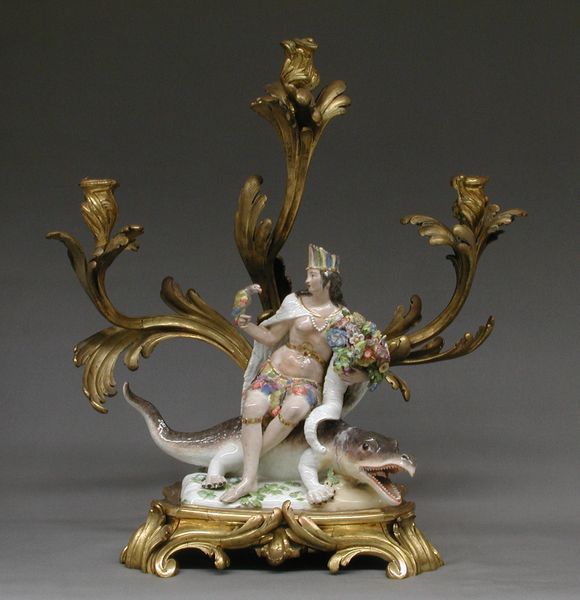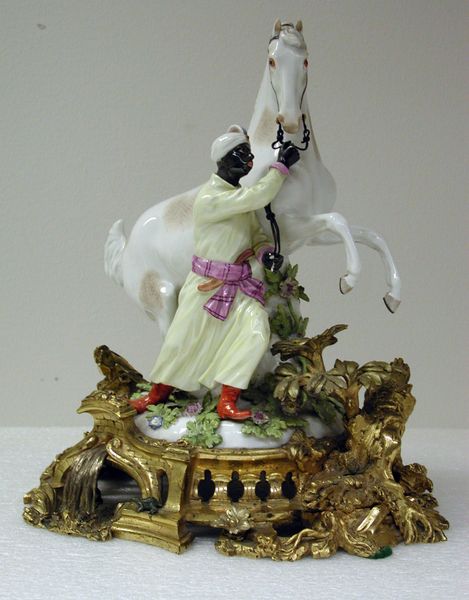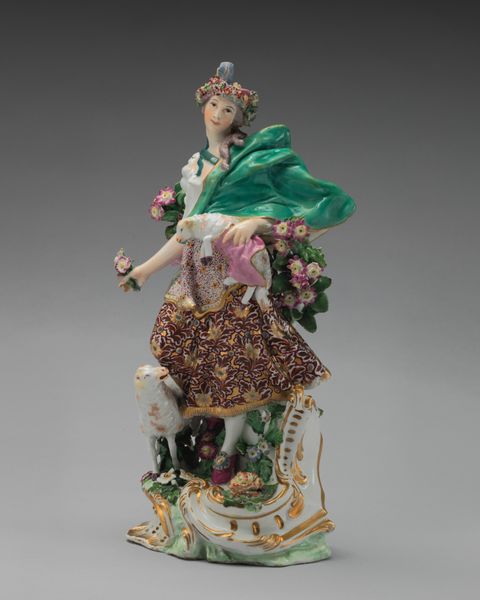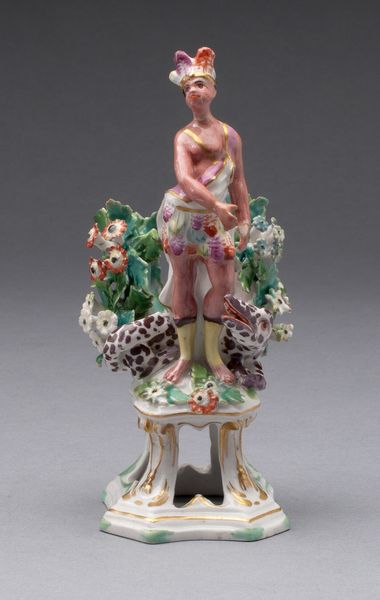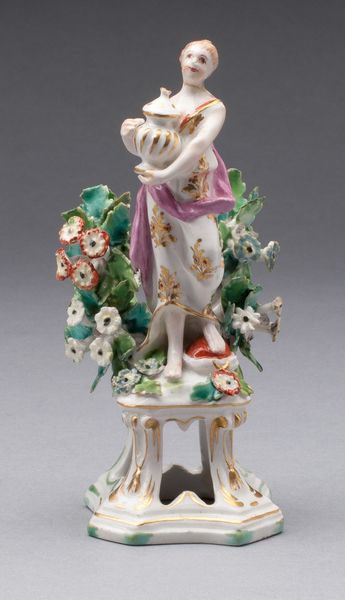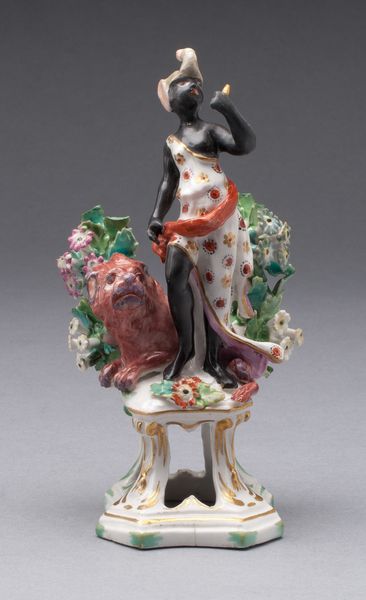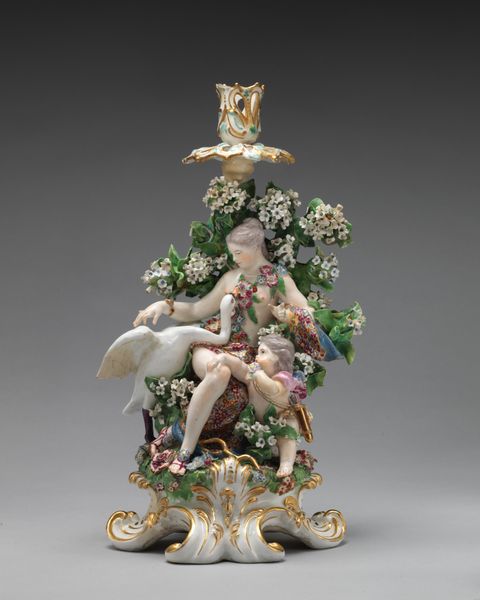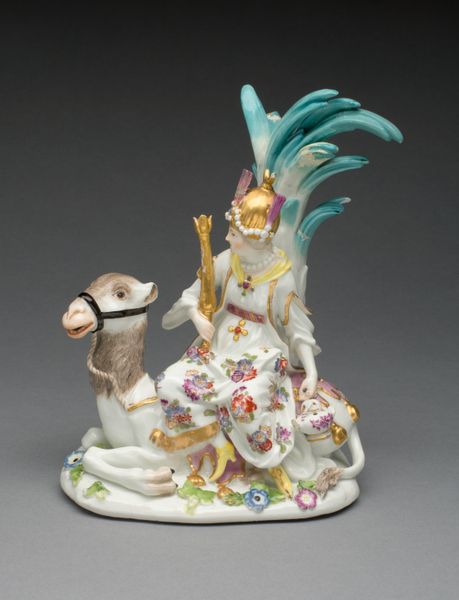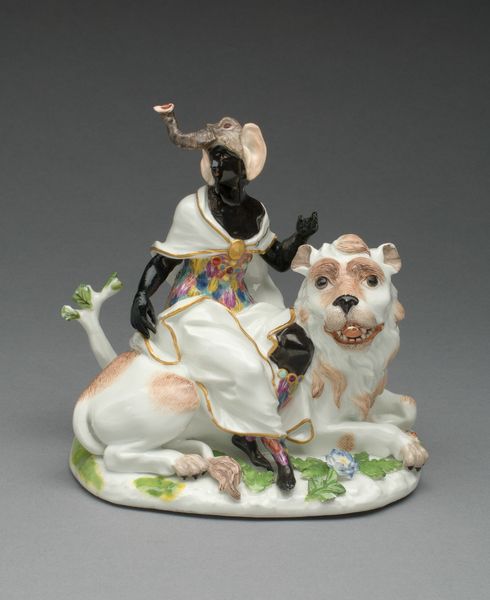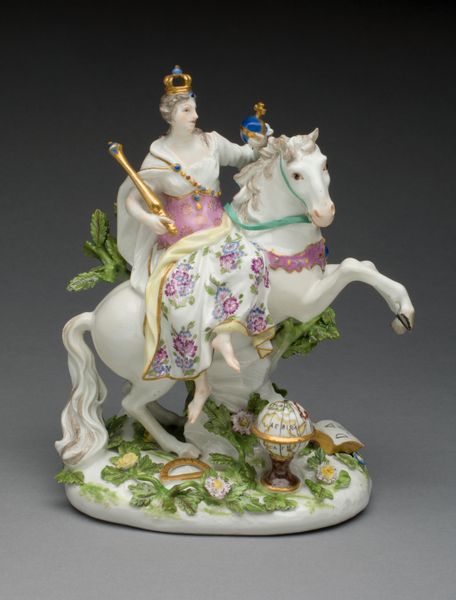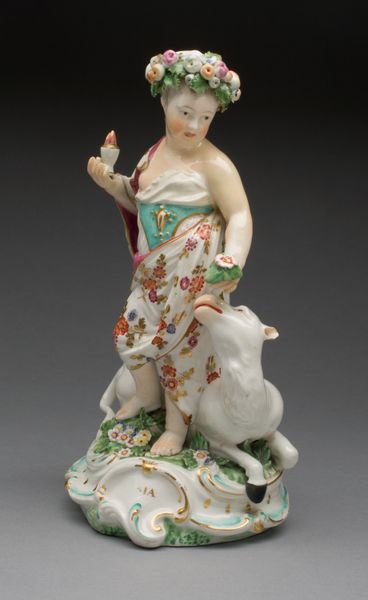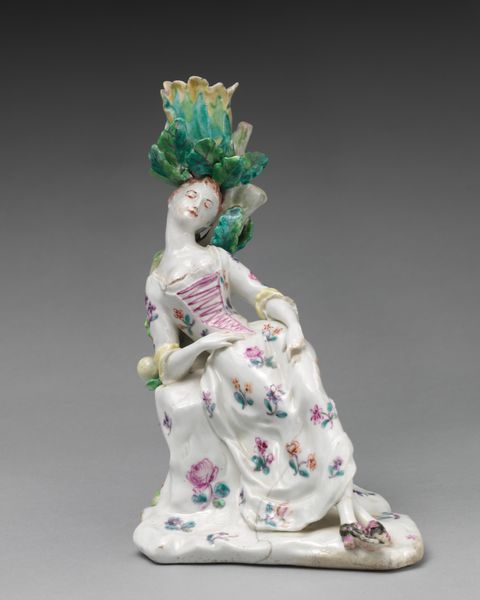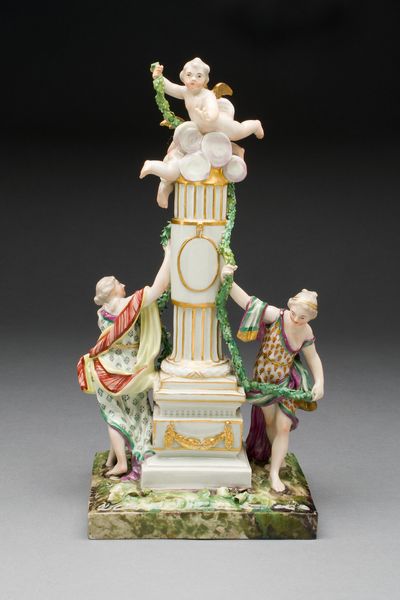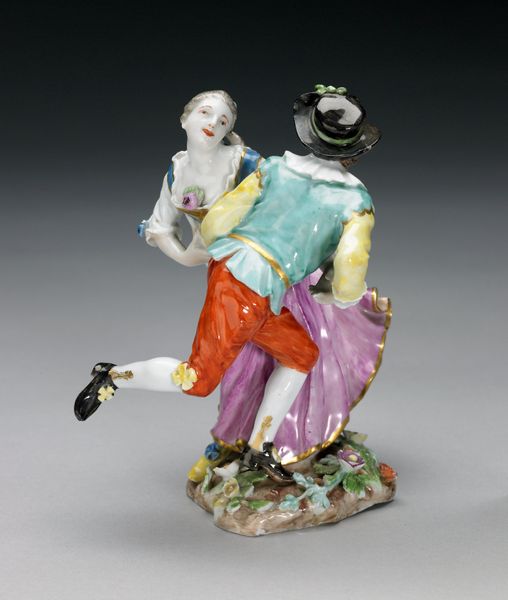
ceramic, porcelain, sculpture
#
sculpture
#
ceramic
#
porcelain
#
figuration
#
sculpture
#
orientalism
#
decorative-art
#
miniature
#
rococo
Dimensions: Overall (confirmed): 22 × 20 1/4 × 9 1/8 in. (55.9 × 51.4 × 23.2 cm); Height (figure): 12 in. (30.5 cm)
Copyright: Public Domain
Curator: This captivating porcelain sculpture is titled "Asia," part of a pair crafted at the Meissen Manufactory between 1740 and 1760. Editor: Oh, isn't that charming? It feels so whimsical and light, almost like a porcelain dream. All those swirling floral details on her robe – they just bounce with color! And the camel seems so serene, if a bit…pigeon-toed? Curator: Indeed! It encapsulates the Rococo fascination with exoticism, particularly what Europeans imagined the "Orient" to be. This piece is steeped in the visual language of that period’s "Orientalism," representing an idealized, almost fantasized version of Asia. The figure, presumed to be an allegorical representation of the continent, is regally seated on a camel, amidst lavishly decorated details. Editor: Fantasy is the perfect word! I mean, look at that headdress. It's straight out of a storybook, not exactly…factual, shall we say? It’s the kind of exotic flair that probably set imaginations soaring back then, a beautiful mishmash of impressions rather than something truly studied, right? And I bet it shimmered like anything under candlelight. Curator: Absolutely. The piece showcases the cultural fascination of the time, blending imagination with limited knowledge. Beyond just aesthetic delight, consider how the camel, for example, operates as a powerful symbol of the "East" for European audiences, connoting trade routes, distant lands, and untold riches. Porcelain itself was like magic, too - its secrets heavily guarded. Editor: True! Porcelain equals power, literally molded into art. Though, I confess, part of me wonders what someone from Asia would make of this. It's beautiful, but does it echo any truth or respect, or just a fleeting infatuation, dressed up in frills and fancy? Curator: That's a vital point, isn’t it? "Asia," through our contemporary lens, becomes not just an object of beauty, but a window into the complex relationship between Europe and the rest of the world – cultural exchange and projection mingling together. Editor: Well, it gives you pause, doesn't it? All those layers to unpack... still, whatever you make of the history, there's something undeniably joyful and hopeful about it too. Curator: Indeed. Perhaps the power of these objects lies not just in what they represented then, but in what they provoke in us now.
Comments
No comments
Be the first to comment and join the conversation on the ultimate creative platform.
